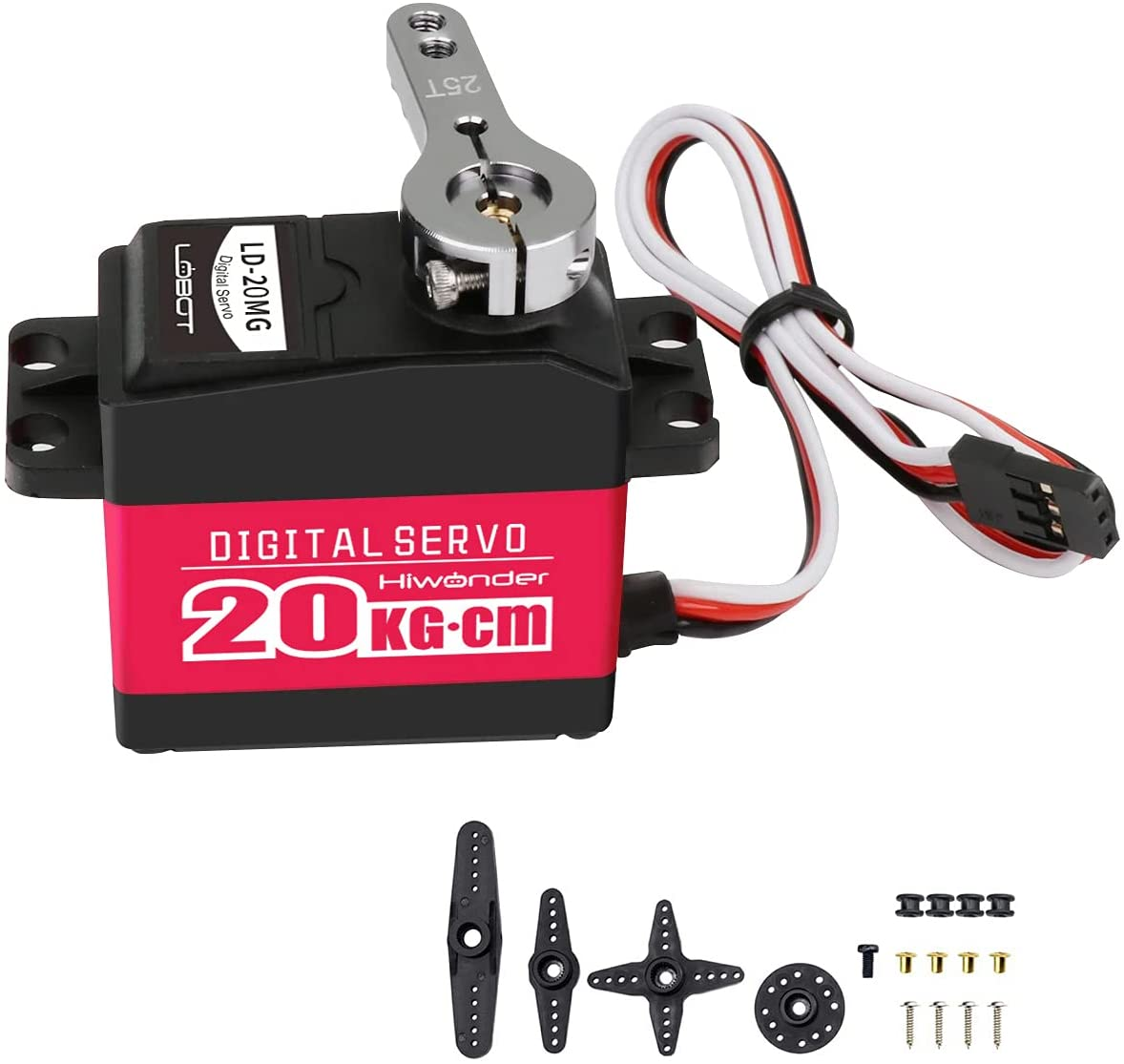"Servo" has various meanings. A servo motor will look very like a stepper motor but you might be able to see an encoder attached to the back end.

Figure 1. A servo actuator after a savage attack by an unidentified animal. Image source: Sparkfun. The linked article would be worth a read - although I note that they refer to this as a servo "motor". (It probably is in the dictionary sense of a motor.)
What you are calling a "servo" is probably a servo actuator for a model such as an RC airplane. These don't have a true servo motor but have a small DC motor, gearbox, a position sensing potentiometer on the output shaft and some electronics to run the motor until the actual position matches the commanded position.
- Most steppers seem to come in hard metal cases while servos are made with plastic cases, why is that?
See above. The DC motor is inside the plastic case.
- Servos always come with a set of arms to connect to the shaft while steppers don't. It could also be useful to have such arms attached to the shaft of a stepper, no?
That's definitely a servo actuator. A stepper version would also require a gearbox and feedback. The electronics would be more complex. There's no market for it.
- When looking for 3D-printed gearboxes, I can find many for steppers, but I cannot find any for servos (though I can find metal gearboxes for very big servos), why is that?
True servo motors will probably run at much higher speeds than the steppers. I'd say you're looking at hobby grade parts and the hobbyists will use steppers for ease of control and low cost.




